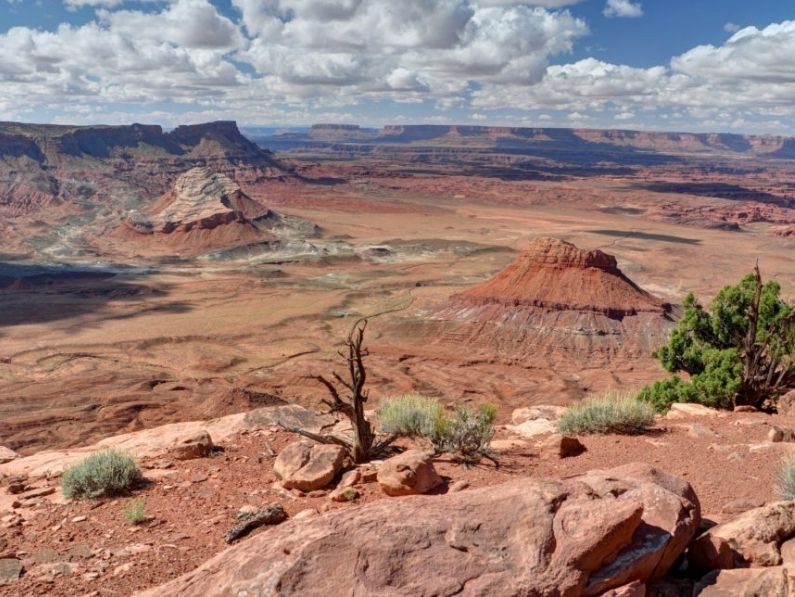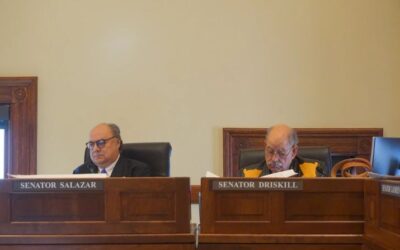Last spring, the price of oil plummeted. Around Utah, producers began shutting-in wells and temporarily stopping production. It’s not unusual. The pause in extraction can last a month, a year, or even decades. For operators, it’s no big deal.
Public land management for oil and gas in Utah follows a three-stage process. First, the Bureau of Land Management prepares a resource management plan, or what land will be available for oil and gas leasing. Then, the agency offers parcels for development. Finally, they receive drilling proposals, according to Landon Newell, a staff attorney at the Southern Utah Wilderness Alliance.
“The management plans for Utah were largely prepared during the George W. Bush administration,” Newell said. “And all of the plans put a finger on development.”
Not only that, but leases are often offered at rock-bottom prices. Sometimes for less than a cup of coffee per acre. Utah had 153 bids of $10 per acre or less between 2007 and 2017, according to Taxpayers for Common Sense.
This low cost of leasing has led to what Newell and others call lease speculation. Companies can buy up leases and sit on them without developing. And this has an impact on how that land is managed.
“The BLM will oftentimes decline from protecting a certain area,” Newell said. “That could be for wildlife reasons, water quality reasons, or for wilderness character reasons because there’s an existing oil and gas lease.”
There are non-producing wells that hold land throughout southeastern Utah, an area of the country increasingly prized for its remote and untouched wilderness.
“There was a well drilled on an area of land called Hatch Point. And this well was drilled, I believe, in the 80s or early 90s. And it’s not a producing well. Never has been. It’s been shut in since it was drilled,” Newell said.
There’s an oil well shut-in since 2011 just north of Dead Horse Point State Park owned by Wesco Operating. A Golden Eagle Exploration gas well that’s only produced 66 days since 2008 in the Paradox Basin. Another oil well just north of Hovenweep National Monument has produced for around two months since the spring of 2013. It’s owned by Diversified Energy. And, Newell said here are decades-old leases in the Box Death Hollow Wilderness Area.
“And like the well in Hatch Point, those leases have never been put into production,” he said.
Once a lease is sold to a company, it can be renewed easily every 10 years. The BLM can’t prohibit development unless there are no surface occupancy restrictions.
When the price of oil collapsed in the spring, refineries scaled back production across the country. The only option for some producers was to shut-in their wells. According to Utah’s Division of Oil, Gas and Mining, the number of shut-in wells was 10 percent higher during May and June of 2020 compared to the previous year. That totaled just over 400 idled wells. Production has rebounded and the number of shut-ins is now only around 8 percent higher.
Deputy director Bart Kettle said the state is tasked with checking the integrity of non-producing wells and making sure they aren’t abandoned by operators.
“The number one thing that we’re going to look at as wells are shut-in is that there is mechanical integrity,” Kettle said. “Does it isolate that well from potential usable sources of drinking water?”
If the well isn’t polluting, it can hold the land.
Jayson O’Neill at the Western Values Project said it’s time we update our laws. He said we should start by changing the Mineral Leasing Act of 1920.
“So, our guiding document for how we go forward with how we lease our public lands in these important areas is based on a 100-year old law,” O’Neill said. “Quite frankly, it’s wildly out of date.”
Senator Chuck Grassley of Iowa, along with New Mexico Senator Tom Udall, introduced bipartisan legislation last year to do just that. The Fair Returns for Public Lands Act increases royalty rates from 12.5 percent to 18.75 percent. And it increases the minimum bids for leasing from $2 per acre to $10.
O’Neill said we need laws like this to make leases more costly. Without change, Utah could get the worst of both worlds: no production or protection.
“You can have areas that become sort of lost zones, right? These areas aren’t great places and have undermined the wildlife habitat opportunities,” O’Neill said.
Oil is still under $40 per barrel. The price may rebound eventually in Utah. But for those holding leases, it doesn’t really need to. The land is theirs.
This story is part of a series with the Rocky Mountain Community Radio collaboration on how fossil fuels impact the West.






